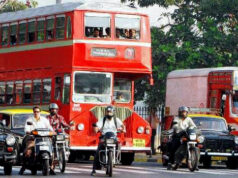There are few areas where the difference between what Indians want for themselves and what the government of India wants for them is more alarming than in higher education. Six to eight hundred thousand Indians leave for foreign universities every year. Yet foreign universities are not allowed to set shop in India. In September 2013 the government announced that it may soon open doors to foreign varsities. However, foreign universities will not be allowed to repatriate profits. Behind this policy lies a deeply flawed view of the consequences of profitmotive.
There is a reason why Indian students flock abroad. Aspiring Minds, a quality assessment agency, measured the performance of 40,000 odd technical degree students on job-related skills like communication in English and basic problem solving. About 60% to 96% did not meet hiring benchmarks of various industries.
Why is the quality of education so low? Is it because too little is spent on education? Hardly so. A year of education in India costs about as much as an entrylevel car. The per-student-peryear cost in many Indian varsities is around R2 lakh to R3 lakh. Yet while India is Asia’s second largest exporter of passenger cars, out of its 600 odd universities, only the Indian Institute of Technology and University of Delhi figure in Quacquarelli Symonds list of Asia’s top 100 universities. Why is it that India manages to produce quality cars but not quality education?
The answer is fairly straightforward. In the market for cars for-profit producers compete to satisfy consumer demands. The market for education works very differently. Foreign producers are kept out and the profit motive is barred.
When profits are legal, individuals engage in producing better products at lower prices because there is money to be made by serving consumers. When profits are illegal, producers have little incentive to improve the lot of consumers. This simple idea explains not just the state of higher education in India but also why the industrial revolution did not happen in ancient Rome or China. According to William Baumol, professor of economics at New York University, by first century BC the city of Alexandria “knew of virtually every form of machine gearing that is used today, including a working steam engine”.
China, before the conquest by the Yuan dynasty, in 1280 knew how to make paper, gun powder and waterwheels. Yet neither place saw dramatic improvements in the quality of lives of the ordinary people. because in both ancient Rome and China for-profit activity was looked down upon.
But what about equity? Would not for-profit education leave the poor behind? Here too economic history has much to say. Unlike ancient Rome and China, 18th century Britain and Holland saw unprecedented rise in the incomes of ordinary people. Both Britain and Holland were largely for-profit economies.
In India, it is precisely in those areas where government involvement is the greatest that the rich-poor divide is most colossal, ie, justice, health and education. Competition between for-profit firms lowers prices and brings products within the reach of ordinary people.
Nehru thought “profit” to be a dirty word”. The former education minister of Delhi, Masish Sisodia said that it is a sin to make profit in education. Economic history tells us quite the opposite. Nothing works like competition between for-profit firms; education is no exception.
The original article can be accessed here.
Vipin P Veetil is a second year PhD student in the Department of Economics at George Mason University.
Akshaya Vijayalakshmi is a PhD Candidate at Iowa State University, Iowa.
Manasi Bose is part of Centre for Civil Society (CCS), a public policy think tank advancing personal, social, economic and political freedoms.
Post Disclaimer
The opinions expressed in this essay are those of the authors. They do not purport to reflect the opinions or views of CCS.






